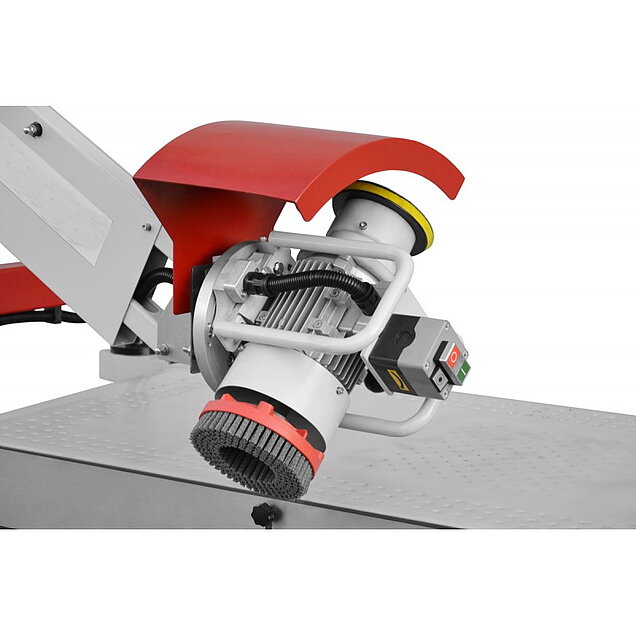
Tips for edge deburring
Whether by hand or by machine, more and more sheet metal fabricators are incorporating edge deburring into their sheet metal processing chain. Removing sharp edges on parts not only protects against injury, but allows for optimal downstream processing.
Edge deburring improves part quality
Sheet metal fabricators should not only consider integrating modern cutting techniques into their processes, but at the same time, take into account deburring of the resulting cut edges.
A deburring method that is compatible with your business requirements can be cost-effectively included in your manufacturing process and greatly contribute to improving the quality of your parts.
1. What is not created does not need to be removed
The introduction of the deburring machine in sheet metal fabrication has tempted many fabricators to take fewer precautions when cutting or punching sheets, along the lines of “it is going to be deburred anyway.” However, this can be a fatal error. Instead, reduce part burrs from the start by carefully preparing the material beforehand. This saves not only time, but also saves deburring consumable costs. Modern plasma cutters, for example, can deliver parts free of slag or burrs, but only when cutting speed, cutting power and the distance from the sheet are configured appropriately.
2. Calculate costs
Today, fabricators are becoming increasingly aware that edge deburring makes sheet metal fabrication easier during downstream processing. Many businesses grind, brush and polish parts by hand. Other sheet metal fabricators utilize automated deburring machines. But before you decide on which method to use, first calculate the cost of deburring for your company. Many businesses that include edge deburring in their fabrication process chain are often not clear about the real costs associated with personnel, tools and the energy consumed by the machinery. The important questions you should therefore be asking yourself are, for instance, how many people are involved in manual deburring and for how long? And do both sides of the parts have to be deburred?
3. Concentrate on the most important deburring processes
The term “deburring” often encompasses several different processes in sheet metal fabrication, from deslagging, deburring, grinding, edge rounding, oxide layer removal along the cutting edge, to surface finishing. Therefore, it is highly recommended to determine exactly what your requirements are in the deburring process. For instance, if 80 percent of your parts are to be deburred and lightly edge-rounded, it is advisable to analyze how your processes align with this requirement. Consequently, it is unnecessary to try to integrate the remaining 20 percent of your parts which are required less frequently, such as surface finishing, into your automated deburring process.
4. Optimize time and resources for edge deburring
When including deburring methods in your fabrication process, it is recommended that you optimize the logistical processes associated with edge deburring. This goes for material flow as well as handling equipment for arranging and rotating parts. You should scope out the time and resources you can save. Keep in mind that deburring is no simple task for operators. Lifting and turning even a relatively light 50-pound part is physically demanding work. Furthermore, manual hand grinding causes vibrations in the hand that can have lasting effects on the operator’s health.
5. Only edge-round when necessary
Edge rounding is indispensable in order to achieve a high quality final part. Rounded edges reduce the risk of injury and optimize downstream processing, whether they are being welded or coated. However, it is important to consider which degree of edge rounding is necessary for your business purposes, depending on corrosion protection requirements. You should consider the following rule of thumb when making this determination: Only round the edges as necessary and as little as possible, since doubling the edge radius means quadrupling the cutting performance (and thereby the costs of the abrasive material).

